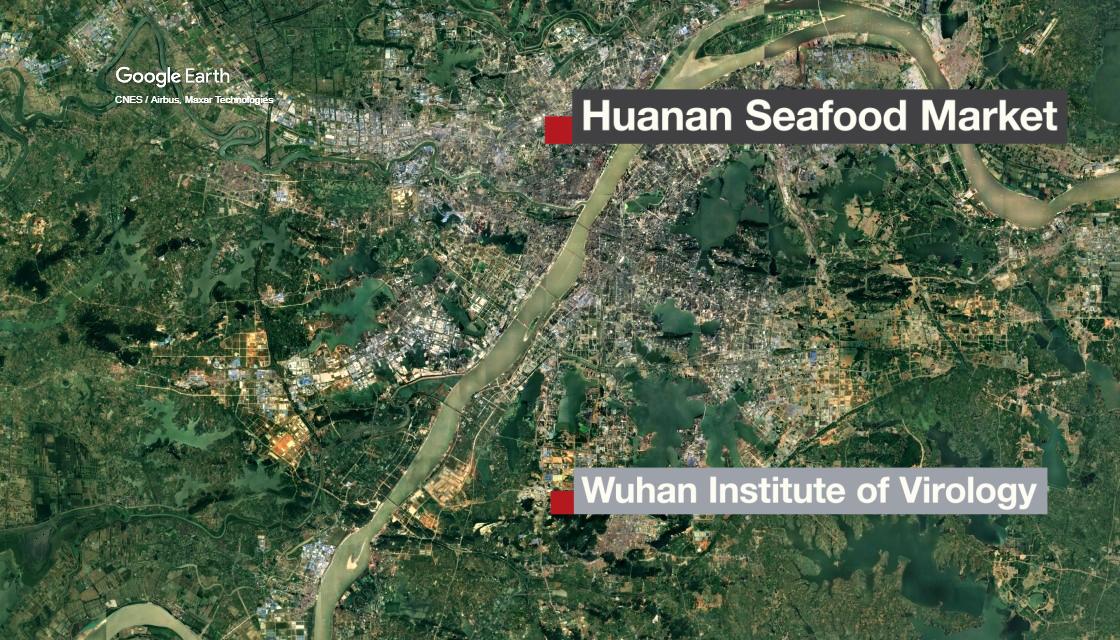Kiwi Henk Schotsman told The AM Show the situation in Wuhan is "a nightmare" and he fears for his baby's health. Credits: Video - The AM Show; Image - Newshub, Wuhan Institute of Virology website
Experts are dismissing conspiracy theories circulating claiming a link between one of China's most advanced virology laboratories and the coronavirus outbreak.
The Wuhan Institute of Virology is only a 45-minute drive away from the Huanan Seafood Fishery Wholesale Market, pinpointed as the source of the virus which has so far killed 162 people in China.
Much of the speculation arose after Dany Shoham - who worked as a senior analyst with Israeli military intelligence for biological warfare in the Middle East - insinuated in a Washington Times article that the institute is linked to China's "covert" development of biological weapons.
Although he didn't provide supporting evidence, Shoham claimed it was likely that "certain laboratories in the institute" have "probably" researched and developed "Chinese [biological weapons], at least collaterally, yet not as a principal facility".
The viral research lab has studied several coronaviruses, including the strain that causes severe acute respiratory syndrome (SARS). The institute is also a branch of the Chinese Academy of Sciences (CAS), the world's largest research institute.
The site is one of only a handful of Pathogen Level 4 (P4) facilities in the world, meaning it has the quarantine standards required for researching the world's most dangerous diseases. It is the only facility of its kind in China.
The institute and coronaviruses
According to a 2017 report in the institute's database, Wuhan Institute of Virology researcher Zhengli Shi and her team discovered the SARS virus originated in bats. The first human case of SARS was recorded in 2002 in China's Guangdong Province, leading to an epidemic that killed 774 people in 2003.
"Viruses in bats may have mixed and matched genes to create the virus that gave rise to the deadly SARS outbreak in 2003, a new study suggests. And it could happen again. All of the ingredients needed to create a new SARS virus are found among viruses currently infecting horseshoe bats," says the article on the Chinese Academy of Sciences website.
Shi and her colleagues found 11 new strains of SARS-related viruses in horseshoe bats following a five year study. She said: "Within the strains, the researchers found all the genes to make a SARS coronavirus similar to the epidemic strain."
The team found several of the strains could already grow in human cells, indicating "there's a chance the viruses that exist in these bats could jump to people".
Shoham, as quoted by the Washington Times, said it was likely that coronaviruses, particularly SARS, are held in the institute. He also noted the possibility of the institute's coronaviruses being included in China's biological weapons programme.
Shoham told the outlet that despite there being no evidence to support the claims, the coronavirus sweeping the world could have possibly been leaked from the lab.
"Outward virus infiltration might take place either as leakage or as an indoor unnoticed infection of a person that normally went out of the concerned facility. This could have been the case with the Wuhan Institute of Virology."
'The virus did not escape from a lab'
But Kiwi experts say there is no evidence the lab has done anything untoward.
"My interpretation of their research is that they detected a number of coronaviruses in Chinese Horseshoe Bats and are simply saying that all the genetic information for the current 2019-nCoV already exists in these viruses," virologist Lance C. Jennings told Newshub.
Professor Miguel E. Quiñones-Mateu from the University of Otago's Department of Microbiology and Immunology said the Wuhan institute is one of the most renowned centres in the world.
"I'm pretty confident that any research performed at the WIV is done under strict guidelines and following stringent protocols," he told Newshub.
'This virus didn’t escape from any laboratory."
Melbourne Institute of Technology security studies professor Vipin Narang told news.com.au the 2019-nCoV virus would be "a terrible bioweapon because of blowback", noting how a good bioweapon would have high lethality but low communicability. Coronavirus is highly communicable (or infectious), with the Chinese government confirming it can be transmitted by patients who are not even showing symptoms.
"There is no evidence that [the virus] was a bioweapon... any claims that it is [wilful] spreads misinformation and is incredibly irresponsible," Narang told the outlet.
But some experts are not ruling out the lab’s involvement.
Professor of International Security and Intelligence Studies at Australia's Strategic and Defence Studies Centre, John Blaxland, retweeted the Washington Times' piece, calling the potential leak of the virus "chilling indeed".
Dr Malcolm Davis, a senior analyst specialising in defence strategy, tweeted: "Obviously I'm following the 2019-nCoV #WuhanOutbreak quite closely. I'm not convinced that there is evidence yet to support the theory that this BL-4 R&D facility in #Wuhan is responsible for the #coronavirus outbreak. It's proximity is interesting though.
"It's more likely the virus jumped from an animal into humans in the Wuhan markets," he added in a follow-up tweet.




